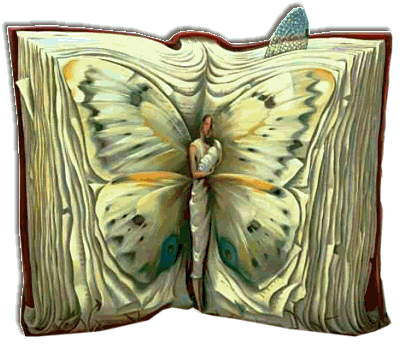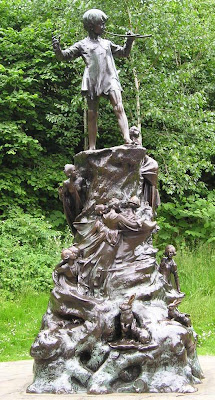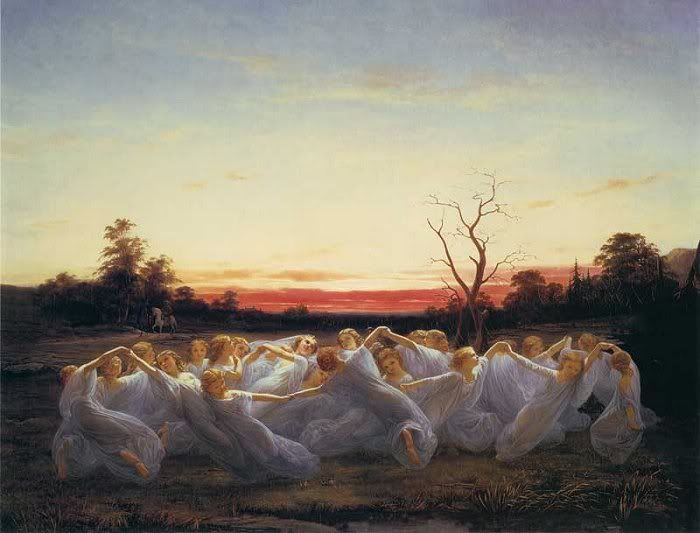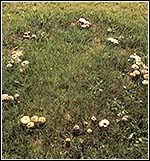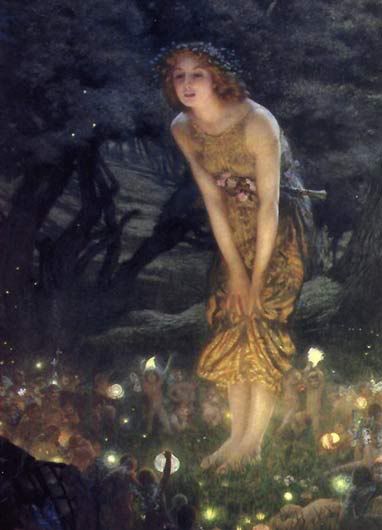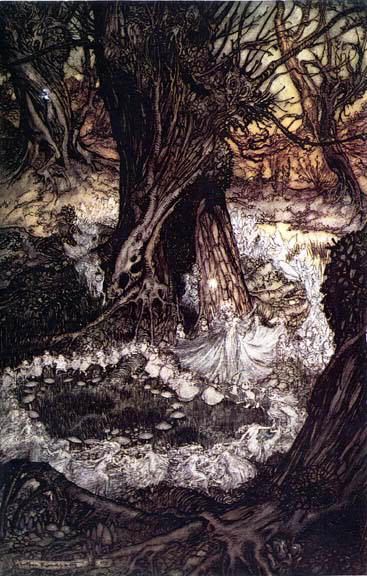En 1705 escribió su principal obra y la más curiosa, llamada “An Historical Physiological and Theological Treatise of Spirits, Apparitions, Witchcrafts, and Other Magical Practises” (“Tratado histórico, fisiológico y teológico de los espíritus, apariciones, brujerías y otras prácticas mágicas”).
En este libro narra su larga y variada experiencia con los espíritus familiares o “genios”, buenos y malos, que acompañan al ser humano en esta vida. También habla de cómo algunas personas han podido percibirlos gracias a su “Segunda Visión” (capacidad para ver a las hadas y otros espíritus), entre ellas, él mismo, quien pudo verlos durante muchos años.
En el prefacio reconoce que este tema es confuso y ha sido poco investigado, pero afirma que él pudo conocerlo mejor gracias a las extraordinarias visitas de estos genios (o Genii, como él los llama), con los que conversó y que le causaron una gran impresión.
En el último capítulo habla en contra de aquellos investigadores que no creen en la brujería, pues él creía firmemente en su realidad. También trata otros temas, como la adivinación, los sueños, etc.
Contaba Beaumont lo siguiente sobre las hadas: “yo vi bailar a algunas de ellas en un anillo en el jardín y cantar cogidas de la mano, sin mirarse de frente, sino con las espaldas vueltas hacia el interior del círculo”. Según nos narra, les preguntó qué clase de seres eran y le contestaron que eran “de una orden de criaturas superiores al género humano, que podían influir en nuestros pensamientos y que su morada estaba en el aire”.
"Anillos de hadas y hongos"/"Fairy Rings and Toadstools" de/by Richard Doyle
Aquí os dejo la narración de una de sus experiencias, en la que incluye una detallista descripción de cómo vestían estas dos hadas que le visitaban:
"Dos espíritus se ocuparon de mí, de noche y de día, durante más de tres meses seguidos. Se llamaban el uno al otro por sus nombres. Otros espíritus llamaban a la puerta de mi habitación para preguntar si esos espíritus vivían allí, y ellos les respondían que sí. En cuanto a los otros espíritus que me visitaron, nunca escuché ninguno de sus nombres. Sólo una vez le pregunté cómo se llamaba a un espíritu que vino algunas noches seguidas a tocar una campanilla en mi oído, y me respondió que Ariel. Los dos espíritus que constantemente estuvieron conmigo se aparecían con aspecto de mujer, tenían la tez morena y unos tres pies de estatura. Las dos llevaban puestos amplios vestidos negros de rejilla, atados con un cinturón negro en la mitad, y debajo de la rejilla tenían un vestido de un color dorado, con una especie de luz que brillaba a través de ellos. Sus cabezas no lucían moños altos, sino que llevaban puestos gorros de lino blanco con un encaje de de tres dedos de ancho, y sobre ellos llevaban un capuchón negro y amplio de rejilla. "
The Stuff that Dreams are Made Of #2 by John Anster Christian Fitzgerald
"El material del que están hechos los sueños, nº2" por John Anster Christian Fitzgerald
Sin embargo, Beaumont nos cuenta que la primera vez que los vio fue una experiencia terrible e impresionante. Cuando lo visitaron la primera vez, no los vio, sólo los escuchó llamándole a través de la ventana de su habitación, haciendo sonar campanas, cantándole y tocándole música. La segunda vez fue igualmente terrorífica. Le visitaron tres hombres y las dos mujeres que nos describía en el extracto anterior (aunque afirma que, más tarde, llegaron cientos). Al parecer, estos espíritus eran malvados pues no dejaron a Beaumont dormir durante tres días seguidos, amenazándole con que, si se dormía o le contaba a alguien que ellos estaban en la casa, lo matarían. El cuarto día, Beaumont no pudo aguantar más y se durmió. Como no le sucedió nada, dejó de hacer caso a las amenazas de estos espíritus traviesos, que, sin embargo, no se cansaron y siguieron junto a él día y noche durante tres meses.
"La pesadilla"/"The Nightmare" de/by Johann Heinrich Fuseli
Descubrí a John Beaumont gracias a una pequeña mención sobre él en el libro "Cuentos de hadas. Alegorías de los Mundos Internos" de J.C.Cooper, otro libro muy recomendable, publicado en la editorial Sirio.
***
John Beaumont (1650-1731) was an English physicist and geologist with a passion for exotic plants and the underground caverns, and a great interest in all things occult. He lived in Stone Easton, Somersetshire, and although he was encouraged to explore the natural history of this region, he will soon be just more interested in witchcraft. It is said of him that he was a great reader and a firm believer in the supernatural.In 1705 he wrote his main work and the most curious, called "An Historical Physiological and Theological Treatise of Spirits, Apparitions, Witchcrafts, and Other Magical Practise".
This book recounts his long and varied experience with familiar spirits or "genies", both good and bad, those who accompany the human beings through their lives. It also talks about how some people have been able to see them thanks to their "Second Sight" (the ability to see fairies and other spirits), including himself, who could see them for many years. In the preface he acknowledges that this issue is confusing and has been little investigated, but he says that he could know it better because of the extraordinary visits of these geniuses (or genii, as he calls them), with whom he spoke and who caused him great impact.In the last chapter argues against those scholars who do not believe in witchcraft, for he believed firmly in its reality. It also addresses other issues, such as divination, dreams, etc.
Beaumont said the following about the fairies: "I saw them dance in a ring in the garden, ad sing, holding hands round, not facing each other, but their backs turned to the inner part of the circle. " As he tells us, he asked them what kind of beings they were and they replied that they were "an order of creatures superior to mankind, and could influence our thoughts, and that their habitation was in the air. "
Here you have the story of one of his experiences, which includes a detailed description of how these two fairies who visited him dressed like:
"I had two spirits, who constantly attended me, night and day, for above three months together, who called each other by their names; and several spirits would call at my chamber door, and ask whether such spirits lived there, and they would answer they did. As for the other spirits that attended me, I heard none of their names mentioned only I asked one spirit, which came for some nights together, and rung a little bell in my ear, what his name was, who answered Ariel. The two spirits that constantly attended myself appeared both in women's habit, they being of brown complexion, about three feet in stature; they had both black loose net-work gowns, tied with a black sash about the middle, and within the net-work appeared a gown of a golden colour, with somewhat of a light striking through it. Their heads were not dressed in top-knots, but they had white linen caps on, with lace on them about three fingers' breadth, and over it they had a black loose net-work hood."
However, Beaumont tells us that the first time he saw them was a terrible and impressive experience. When they visited him for the first time, he did not see them, he only heard them calling him through the window of his room, ringing bells, singing and playing music. The second time was equally terrifying. He was visited by three men and the two women described in the previous statement (although he claims that, later, hundreds of them came). Apparently, these were evil spirits because they did not let Beaumont to sleep for three days, threatening him that if he fell asleep or told someone they were in the house, they would kill him. The fourth day, Beaumont could take no more and fell asleep. As there happened nothing, he no longer paid atention to the threats of these mischievous spirits, which, however, did not tire and stayed with him day and night for three months.
I discovered John Beaumont thanks to a small mention of him in the book "Fairy Tales: Allegories of the Inner Life" by J.C.Cooper, another highly recommended book.
